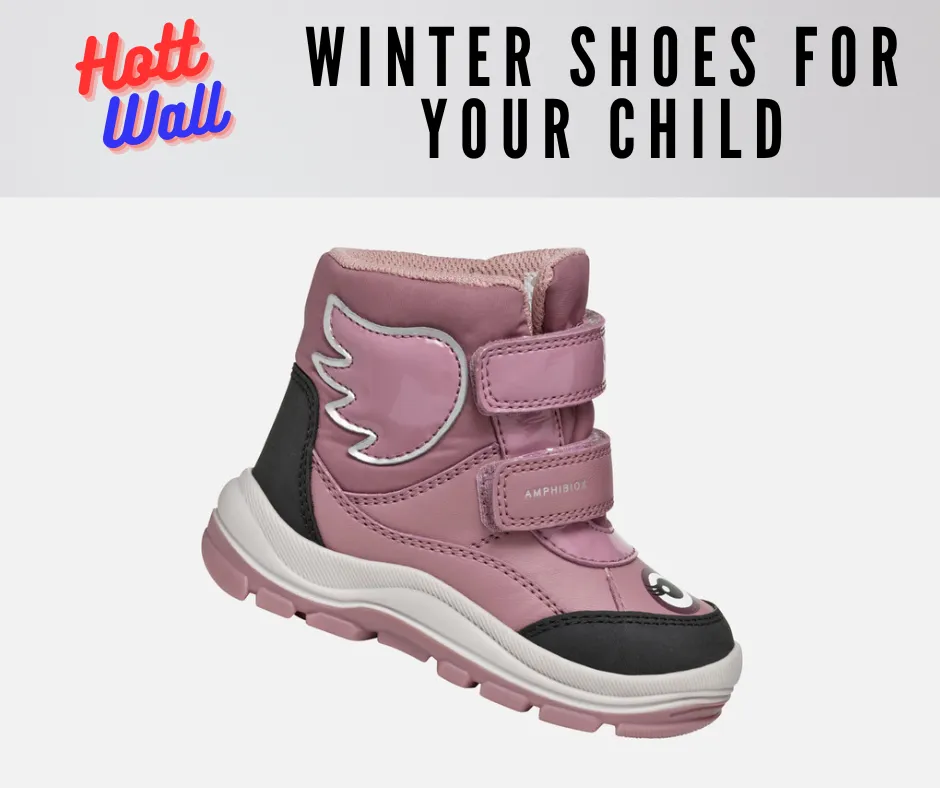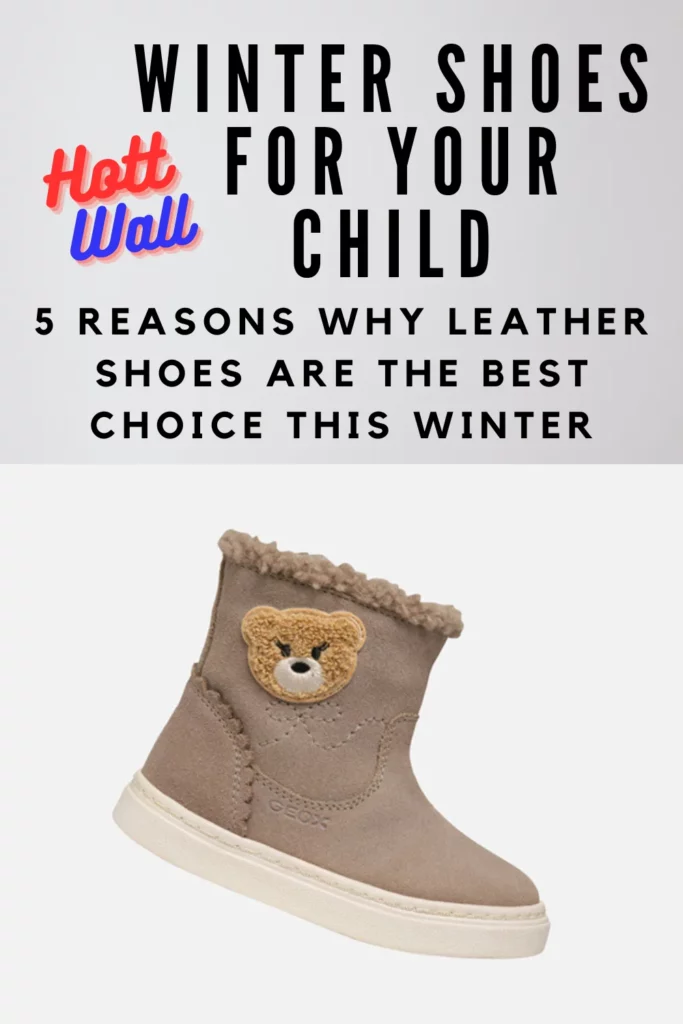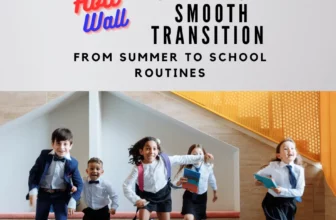
As the colder months approach, Shoes for Your Child one of the most important tasks for parents is ensuring their children are prepared for the winter. A key part of this preparation is choosing the right footwear. Winter can be harsh, and it’s essential to provide your child with shoes that are not only warm but also durable, comfortable, and supportive. One of the best options for children’s winter footwear is leather shoes. In this guide, we’ll explore the benefits of leather shoes, how to measure your child’s feet accurately, and tips for buying the perfect pair of shoes online.
Table of Contents

The Importance of Choosing the Right Winter Shoes for Your Child
Winter brings colder temperatures, wet conditions, and sometimes snow. Children’s feet are particularly sensitive to these elements, and their growing feet need special care. Ill-fitting shoes can lead to discomfort, blisters, or even long-term foot issues. This is why choosing the right pair of shoes for winter is crucial, especially for children who are active and always on the go.
Why Leather Shoes?
Leather shoes offer several advantages for children, especially in winter. Let’s break down the top benefits:
Benefits of Leather Shoes for Children
- Natural Warmth and Insulation
Leather is a natural material that provides excellent insulation, keeping your child’s feet warm during colder months. Unlike synthetic materials, leather allows the feet to breathe, preventing overheating, while also maintaining warmth in cold conditions. This balance makes leather ideal for winter. - Durability
Kids are known for being tough on shoes. Whether they’re running around in the park or playing in the snow, their shoes need to withstand the daily wear and tear. Leather is one of the most durable materials available, meaning that a good pair of leather shoes will last much longer than cheaper alternatives. Investing in leather shoes might seem more expensive upfront, but the long-term savings are significant. - Water-Resistant Properties
While not entirely waterproof, leather shoes can be treated to become highly water-resistant. This is particularly important during the winter when snow, rain, and slush are common. Leather shoes with proper treatment will keep your child’s feet dry in most winter conditions. - Breathability
One of the downsides of many synthetic materials is that they don’t allow feet to breathe, which can cause sweating and discomfort. Leather, on the other hand, is naturally breathable, which helps prevent moisture buildup inside the shoe. This is important not just for comfort but also for hygiene, as it reduces the likelihood of fungal infections or bad odors. - Support and Comfort
Leather shoes tend to offer better support for developing feet compared to many synthetic alternatives. The material molds to the shape of the foot over time, offering a personalized fit. A well-made leather shoe provides both the structure and cushioning that growing feet need, helping to prevent issues like flat feet or incorrect posture. - Style and Versatility
Leather shoes are also a stylish choice that can be paired with various outfits, whether it’s for school, outdoor activities, or family gatherings. Available in many designs and colors, leather shoes can be both practical and fashionable, making them a favorite among parents and children alike.
How to Measure Your Child’s Feet
Accurately measuring your child’s feet is essential when buying shoes online. An ill-fitting shoe can cause discomfort or restrict movement, which can hinder a child’s development. Here’s a step-by-step guide to help you measure your child’s feet at home:
- Measure at the End of the Day
It’s best to measure your child’s feet in the late afternoon or evening, as feet tend to swell slightly throughout the day. This ensures you get the most accurate measurement. - Use a Paper and Pencil
Place a piece of paper on a hard surface, and have your child stand with their full weight on one foot. Make sure their toes are flat and not curled. Using a pencil, trace the outline of the foot. Repeat the process with the other foot, as it’s common for one foot to be slightly larger than the other. - Measure the Length
Using a ruler, measure the distance from the heel to the longest toe on the tracing. This will give you the length of your child’s foot in centimeters or inches. Be sure to round up to the nearest half centimeter to account for any error in tracing. - Measure the Width
To measure the width, identify the widest part of the foot (usually across the ball of the foot) and use a ruler to measure this area. Some shoes come in different width sizes, so this measurement can help ensure a more comfortable fit. - Check Size Charts
Once you have the measurements, consult the sizing charts provided by the online store or shoe brand. Sizes can vary between brands, so it’s essential to use their specific size chart rather than relying on a general size.
Tips for Buying Shoes Online
Now that you’ve measured your child’s feet, it’s time to choose the right shoes. Here are some tips for making a successful online purchase:
- Read the Product Descriptions Carefully
Look for important details like materials (preferably leather), waterproof features, and insulation. Also, check whether the shoes have removable insoles or arch support if your child needs extra comfort. - Check Reviews
Customer reviews can provide insight into the fit, comfort, and durability of the shoes. Pay attention to comments from other parents, as they often share valuable feedback on how the shoes fit children of different ages and sizes. - Consider the Closure Type
For younger children, Velcro straps are a great option, as they’re easy to fasten and adjust. Older kids might prefer lace-up shoes, which offer a more secure fit. Consider your child’s independence level when choosing the closure type. - Buy Shoes with Room to Grow
It’s tempting to buy shoes that fit perfectly at the moment, but kids’ feet grow quickly. Leave some extra room—about 1 to 1.5 centimeters—for growth. However, don’t go overboard with larger sizes, as shoes that are too big can cause tripping and discomfort. - Check Return Policies
Since you’re buying online, ensure that the store has a good return policy in case the shoes don’t fit as expected. Some stores offer free returns, while others may charge a small fee. - Consider Seasonal Needs
Winter shoes should have a good grip to prevent slipping on icy surfaces. Look for shoes with rubber soles and traction to provide stability in wet or snowy conditions.
FAQ
How often should I measure my child’s feet?
It’s recommended to measure your child’s feet every three to four months, as children’s feet grow rapidly during their early years. Regular measurements ensure you always buy the right size.
Are leather shoes good for very cold weather?
Yes, leather shoes are excellent for cold weather because they provide natural insulation. However, for extremely cold conditions, consider shoes with additional insulation like fleece lining or wool socks to keep feet extra warm.
How do I know if my child’s shoes fit correctly?
A well-fitted shoe should have about a thumb’s width of space between the longest toe and the front of the shoe. Your child should also be able to wiggle their toes comfortably without feeling squeezed.
What’s the best way to care for leather shoes?
To extend the life of leather shoes, clean them regularly with a damp cloth and apply a leather conditioner to keep the material supple. For water-resistant protection, apply a waterproofing spray or wax before your child wears them in wet conditions.
Is it okay to buy shoes a size larger for growing kids?
It’s a good idea to leave some room for growth, but buying shoes that are too large can lead to tripping and discomfort. Stick to about 1 to 1.5 centimeters of extra space for growing room.









[…] Leap chair’s ability to adjust to body movements makes it an excellent choice for maintaining comfort throughout the day. Extensive adjustability options ensure a custom fit, promoting better posture […]